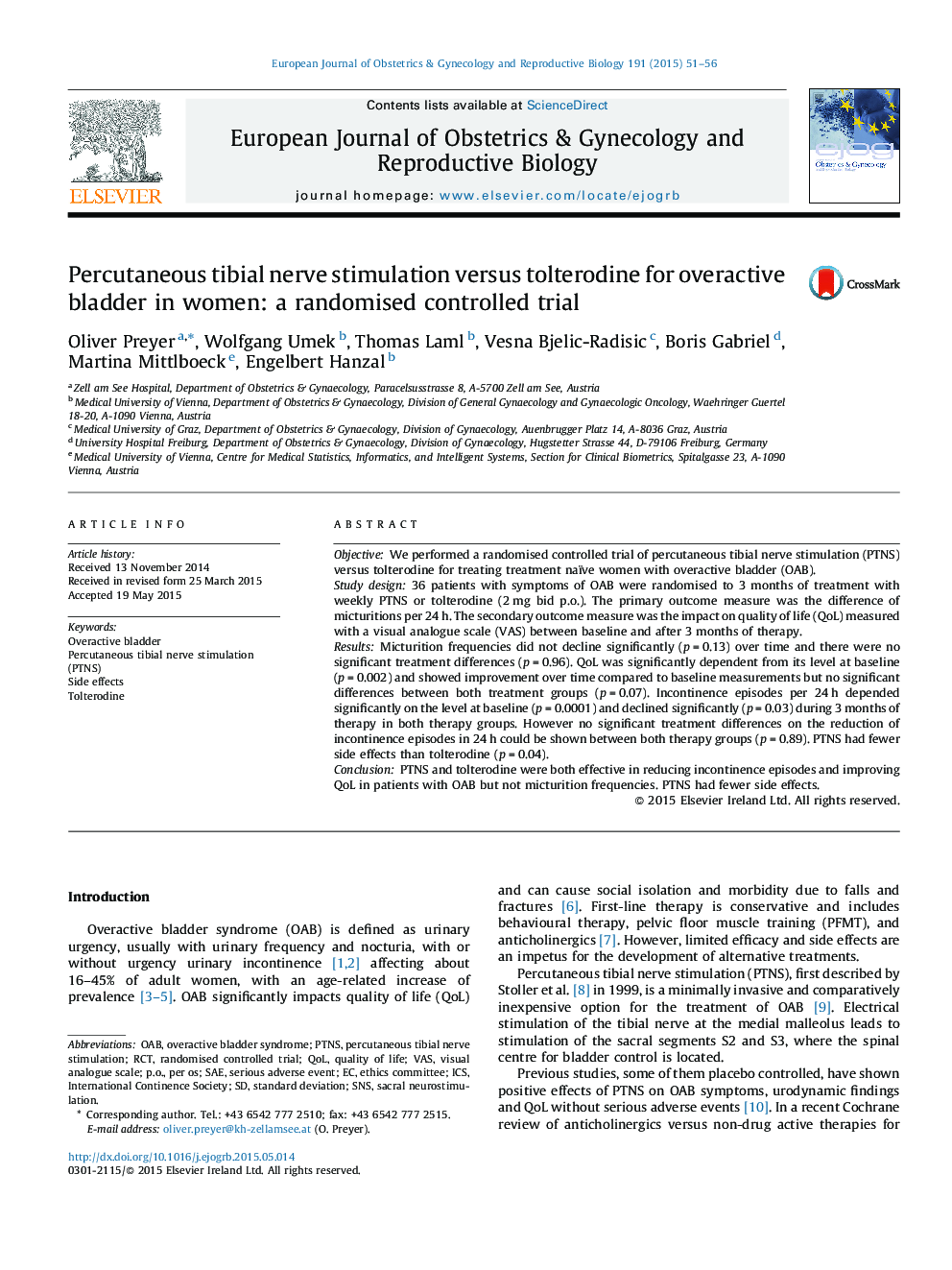| Article ID | Journal | Published Year | Pages | File Type |
|---|---|---|---|---|
| 3919537 | European Journal of Obstetrics & Gynecology and Reproductive Biology | 2015 | 6 Pages |
ObjectiveWe performed a randomised controlled trial of percutaneous tibial nerve stimulation (PTNS) versus tolterodine for treating treatment naïve women with overactive bladder (OAB).Study design36 patients with symptoms of OAB were randomised to 3 months of treatment with weekly PTNS or tolterodine (2 mg bid p.o.). The primary outcome measure was the difference of micturitions per 24 h. The secondary outcome measure was the impact on quality of life (QoL) measured with a visual analogue scale (VAS) between baseline and after 3 months of therapy.ResultsMicturition frequencies did not decline significantly (p = 0.13) over time and there were no significant treatment differences (p = 0.96). QoL was significantly dependent from its level at baseline (p = 0.002) and showed improvement over time compared to baseline measurements but no significant differences between both treatment groups (p = 0.07). Incontinence episodes per 24 h depended significantly on the level at baseline (p = 0.0001) and declined significantly (p = 0.03) during 3 months of therapy in both therapy groups. However no significant treatment differences on the reduction of incontinence episodes in 24 h could be shown between both therapy groups (p = 0.89). PTNS had fewer side effects than tolterodine (p = 0.04).ConclusionPTNS and tolterodine were both effective in reducing incontinence episodes and improving QoL in patients with OAB but not micturition frequencies. PTNS had fewer side effects.
